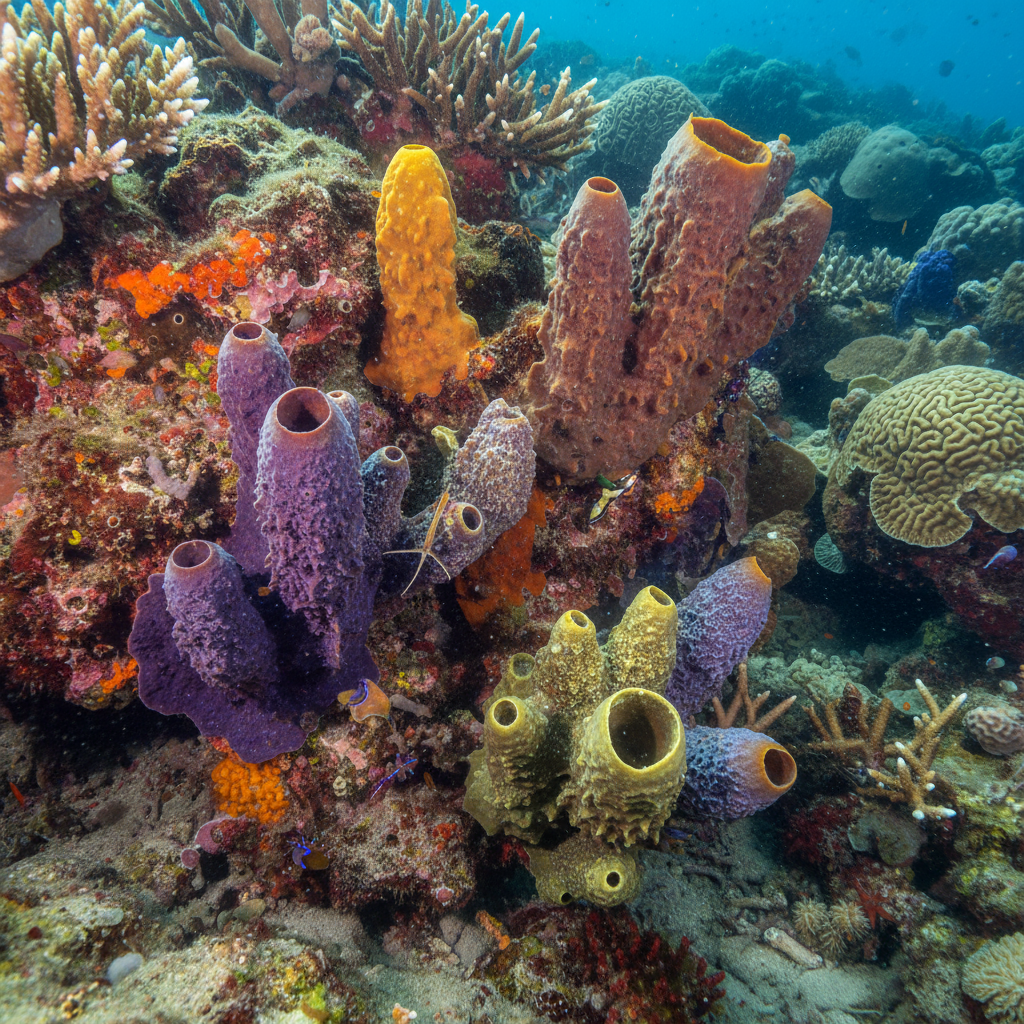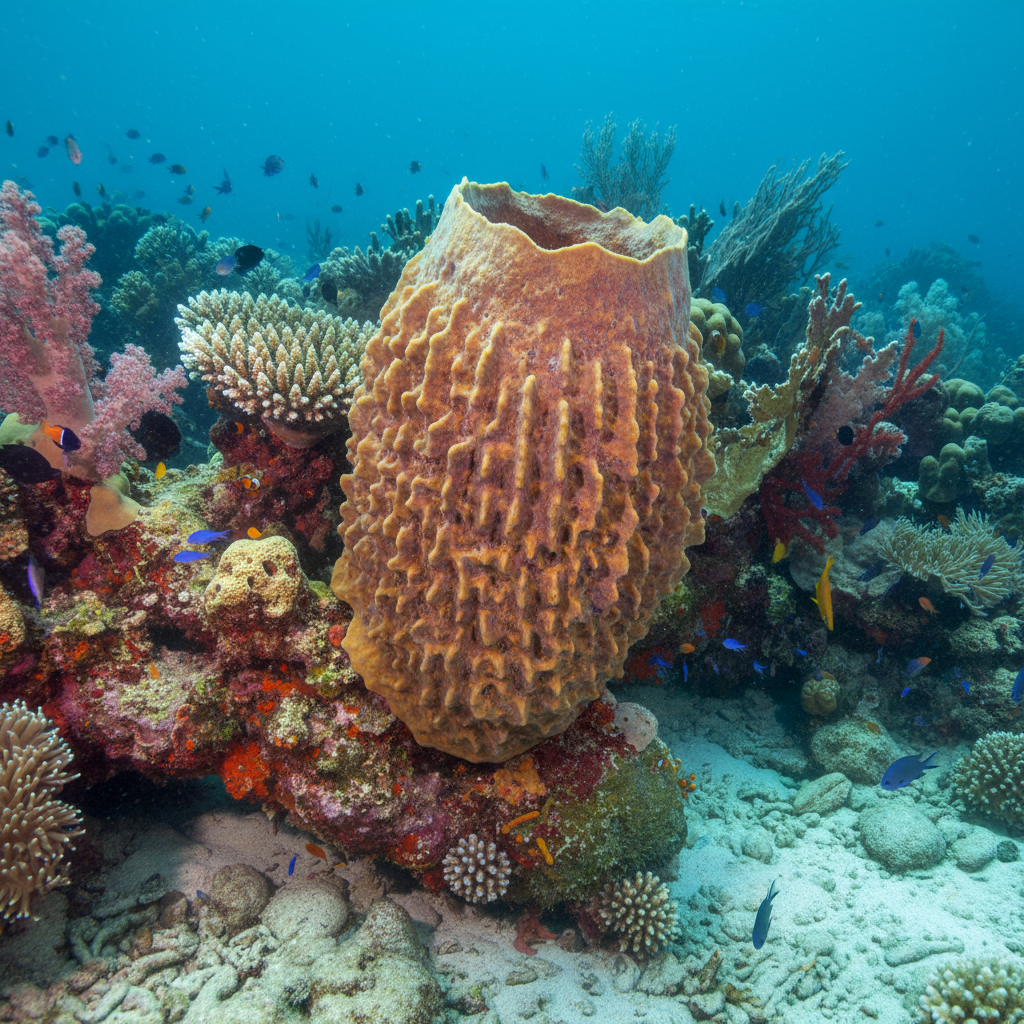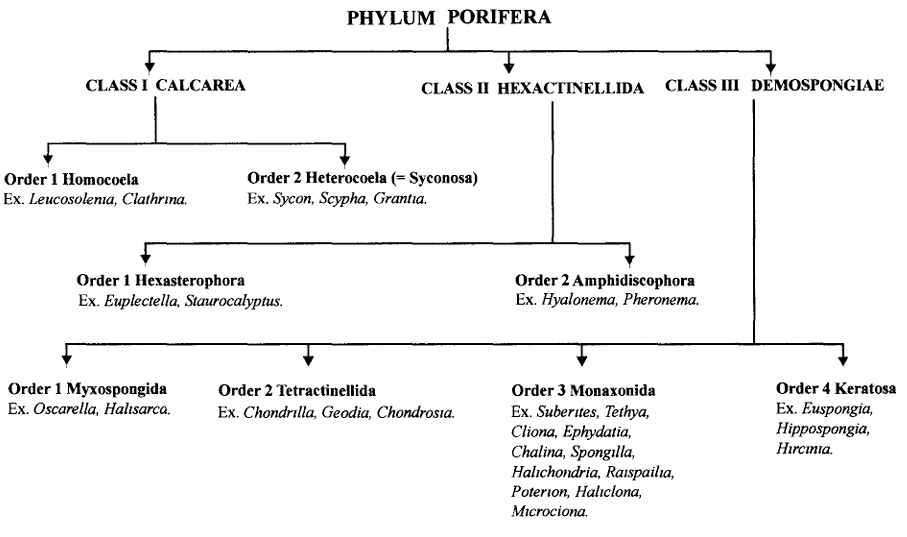Phylum Porifera
Phylum Porifera, commonly known as sponges, might seem unassuming at first glance—decorating aquariums, inhabiting the silence of ocean floors—but beneath that simplicity lies a group of animals that changed the course of life’s evolution and are central to unlocking the mysteries of multicellularity. In a world rushing toward complexity, these quiet, ancient beings remind us that innovation sometimes means stripping life to its most essential forms. What follows is a detailed, yet humanized examination of their lives, importance, and intricacies.

Phylum Porifera, commonly known as sponges, represents one of the most fascinating and ancient groups of multicellular animals. These aquatic animals are characterized by their porous bodies and simple organization, yet they play a vital role in marine ecosystems and scientific research. This comprehensive guide explores the characteristics, classification, ecological significance, and unique biological features of Phylum Porifera, making it an essential resource for students, researchers, and nature enthusiasts.
What is Phylum Porifera?
The name “Porifera” literally means “pore bearers,” reflecting a key feature of these animals—their bodies are riddled with tiny pores called ostia. These pores allow water to flow through the sponge’s body, facilitating feeding, respiration, and waste removal. Poriferans are primarily marine animals, although some live in freshwater habitats. They are sessile, meaning they attach themselves permanently to surfaces such as rocks or coral reefs, and remain stationary throughout their lives.
Picture Earth over 600 million years ago: oceans swirl with primitive life, but nothing resembling a fish, insect, or bird yet exists. Into this watery world, the first multicellular animals emerge—Porifera. The name “Porifera” means “pore bearers,” a direct nod to their permeable bodies riddled with tiny holes. Their arrival marked a turning point, as individuality gave way to communities of cells working together, cooperating within the same body and setting the scene for all animal diversity to follow.

Key Characteristics of Phylum Porifera
- Sponges exhibit several unique biological traits that distinguish them from other animal groups:
- Reproduction: Both asexual (budding, gemmules) and sexual reproduction exist, with free-swimming larvae stages aiding dispersal.
- Cellular Level Organization: Unlike most animals, sponges lack true tissues or organs. Their bodies consist of loosely organized specialized cells working together.
- Porous Body Structure: The entire body is pierced by microscopically small pores (ostia) and one or more large openings called oscula, which allow water to circulate.
- Filter Feeding Mechanism: Powered by flagellated collar cells (choanocytes), sponges filter plankton and organic particles from water.
- Skeleton Composition: Their supportive structures are made up of spicules (calcium carbonate or silica) and/or spongin fibers, giving them flexibility and protection.
- Regenerative Ability: Sponges can regenerate lost parts, even reforming from small fragments, making them incredibly resilient.
Structural Diversity: From Vase to Enigma
Sponges come in fascinating shapes and surprising colors. Some look like branching trees or tubular vases, while others form massive mat-like colonies over coral reefs. They can be solitary or communal, hardy or exceptionally delicate, and range from a few millimeters to over a meter across. Their bodies provide habitats for countless tiny marine creatures, making them biological architects of underwater worlds.
The Canal System: A Masterpiece of Function
The real ingenuity of Porifera lies in their canal systems, which are masterpieces of biological plumbing. Water drawn constantly through their structure serves every vital function—supplying food and oxygen, and carrying away waste. Depending on the species, the complexity of this system can vary:
- Asconoid: The simplest plan, essentially a hollow tube lined by choanocytes.
- Syconoid: The body wall folds inward, creating radial canals that increase the area available for filtering water and capturing food.
- Leuconoid: By far the most complex, featuring an intricate network of canals and chambers. This allows for much larger body sizes and greater efficiency.
Skeleton: Microscopic Marvels
Though sponges might seem soft and unprotected, their internal skeletons—crafted from minerals and proteins—are marvels all their own:
- Spicules are tiny structures made of either silica or calcium carbonate, forming elaborate frameworks within the sponge.
- Spongin fibers, a form of collagen protein, lend flexibility and resilience.
These features are not just beautiful under a microscope; they’re key to the classification of sponges.
Classification: The Main Classes of Porifera

Porifera are divided into three major classes, each with its own unique skeletal materials and body forms:
- Calcarea (Calcareous Sponges):
- Skeleton made of calcium carbonate spicules.
- Found mainly in shallow marine waters.
- Examples: Sycon, Leucosolenia.
- Hexactinellida (Glass Sponges):
- Possess six-rayed (hexactine) silica spicules.
- Often found in deep seas; notable for their ornate, glass-like skeletons.
- Examples: Euplectella, Hyalonema.
- Demospongiae:
- The most diverse class.
- Skeletons of spongin, silica, or both.
- These include most familiar sponges, including freshwater species.
- Examples: Spongilla, Spongia.
Life Cycle and Reproduction: The Power of Renewal
Porifera exhibit remarkable powers of regeneration—a trait that would make any superhero envious. A fragment of sponge, even mashed through fine cloth, can reorganize itself into a complete living sponge.
- Reproduction can be both asexual and sexual:
- Asexual methods include budding and gemmule formation, where new individuals break off or survive harsh conditions tucked inside protective capsules.
- Sexual reproduction is achieved with ova and sperm—despite their simplicity, most sponges are hermaphrodites and capable of cross-fertilization.
- The resulting larvae are ciliated and free-swimming, drifting before settling and transforming into adult sponges.
This cycling between fixed adult and mobile larva stages has given sponges a resilient edge through Earth’s long history.
Ecological and Practical Importance
Sponges play outsized roles—ecologically, scientifically, and even culturally.
- Ecological Engine: Sponges filter thousands of liters of water, capturing tiny food particles, recycling nutrients, and clarifying oceanic and freshwater habitats. Their bodies provide shelter for microorganisms, shrimps, and countless other marine dwellers.
- Pharmaceutical Promise: Sponges yield remarkable bioactive compounds, some pivotal in developing antiviral and anticancer drugs.
- Bioindicators: Because they accumulate heavy metals and toxins, sponges help scientists monitor the health of aquatic ecosystems.
- Commercial Uses: Spongia species and others have long supplied natural bath sponges, valued for their softness and absorbency.
The Evolutionary Story: A Living Fossil
In evolutionary terms, Porifera are living fossils, their body plans changing little for hundreds of millions of years. Their simple yet effective design remains a powerful testament to the elegance of early animal life and continues to inspire scientists exploring evolutionary biology, developmental processes, and ecological networks.
References
- Porifera – Overview on ScienceDirect
https://www.sciencedirect.com/topics/agricultural-and-biological-sciences/porifera - Borchiellini et al., Porifera (Sponges): Recent Knowledge and New Perspectives – Wiley
https://onlinelibrary.wiley.com/doi/abs/10.1002/9780470015902.a0029283 - Phylum Porifera | manoa.hawaii.edu
https://manoa.hawaii.edu/exploringourfluidearth/biological/invertebrates/phylum-porifera - Hooper J.N.A. et al., Zootaxa 20 years: Phylum Porifera (2021)
http://www.vliz.be/imisdocs/publications/362113.pdf - Yang et al., Development of a multilocus-based approach for sponge phylogeny – PMC
https://pmc.ncbi.nlm.nih.gov/articles/PMC5288722/ - Wörheide, Deep Phylogeny and Evolution of Sponges – ScienceDirect
https://www.sciencedirect.com/science/article/abs/pii/B9780123877871000076

Pingback: Leucosolenia | Zoologyverse | 2025
Pingback: Sycon or Scypha | Zoologyverse | 2025
Pingback: Euplectella | Zoologyverse | 2025
Pingback: Pheronema | Zoologyverse | 2025
Pingback: Oscarella : Classification, Habitat, Distribution, and Identification | Zoologyverse | 2025
Pingback: Cliona: Classification, Habitat, Characteristics | Zoologyverse | 2025
Pingback: Chondrilla : Classification, Habitat, Characteristics | Zoologyverse | 2025
Pingback: Tethya: Classification, Habitat, Characters | Zoologyverse | 2025
Pingback: Halichondria | Zoologyverse | 2025
Pingback: Spongilla: Classification, Habitat, Characteristics | Zoologyverse | 2025
Pingback: Poterion | Zoologyverse | 2025
Pingback: Microciona | Zoologyverse | 2025
Pingback: Euspongia | Zoologyverse | 2025
Pingback: Ephydatia | Zoologyverse | 2025
Pingback: Hircinia | Zoologyverse | 2025